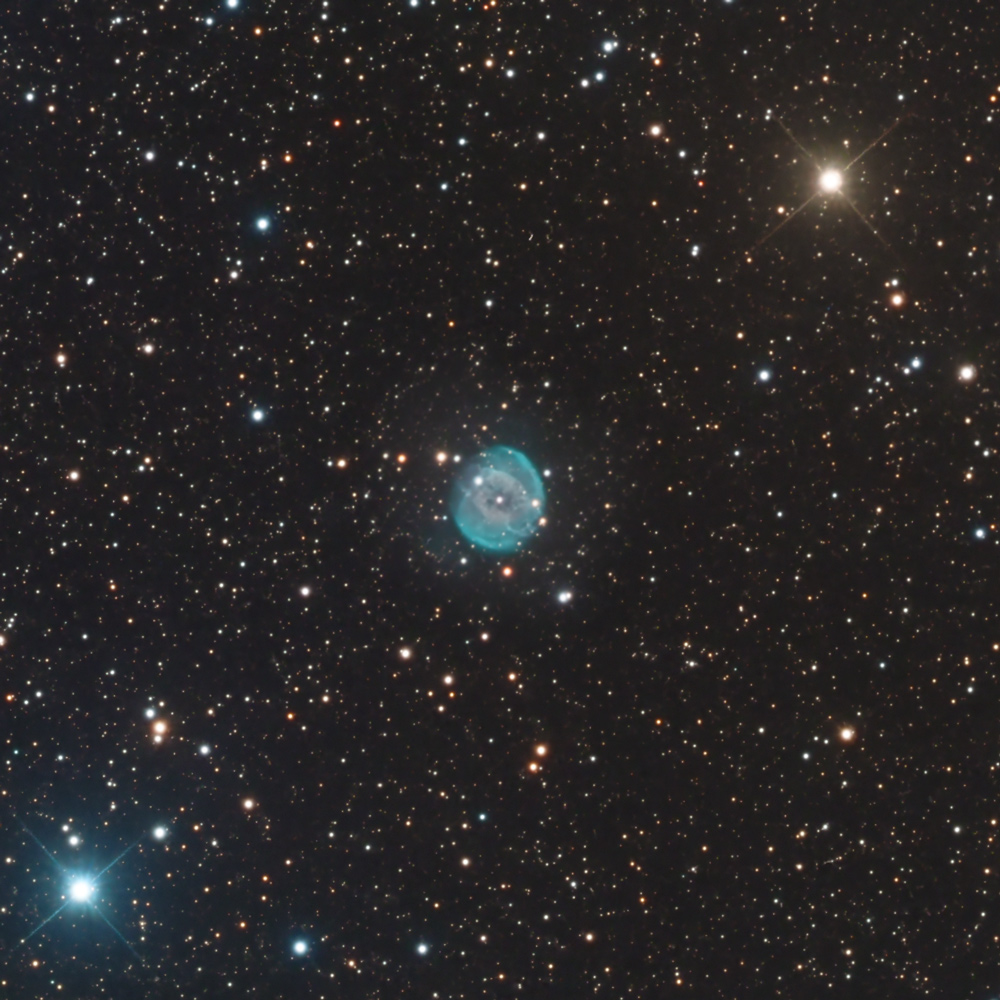

NGC 6804: This is a very small (about 66 arcseconds by 48 arcseconds) and dim (magnitude 12) planetary nebula in the constellation Aquila. A "planetary nebula" (so called because
the astronomer who first identified them as nebulae noted the color often was similar to the then recently-discovered Neptune) is a structure of gas resulting from the death throes of a star about the size of our
sun, when it runs out of fusable material; the color is the result of the gas being ionized by the remnant of the star, a white dwarf (ionized oxygen is the dominant emission in this planetary nebulae,
giving off the characteristic blue-green color). It is estimated to be approximately 4200 light years from earth, which would give it a diameter of about 1.2 light years.
The image on this page is full resolution (it's really a tiny nebula). I like dense star fields, and this one meets that description. If you like dense star fields (contrary to the current practice of eliminating
stars), click on the links to the uncropped images (there's also a link to a cropped version upsampled to twice full resolution). Interestingly, most of my uncropped images have lots of little background
(much farther away) galaxies, but this one does not have any that I could find. I assume that this is because I was imaging into the plane of the Milky Way galaxy, and the light from very distant galaxies
isn't going to get through all that dust and all those stars.
Copyright 2023 Mark de Regt